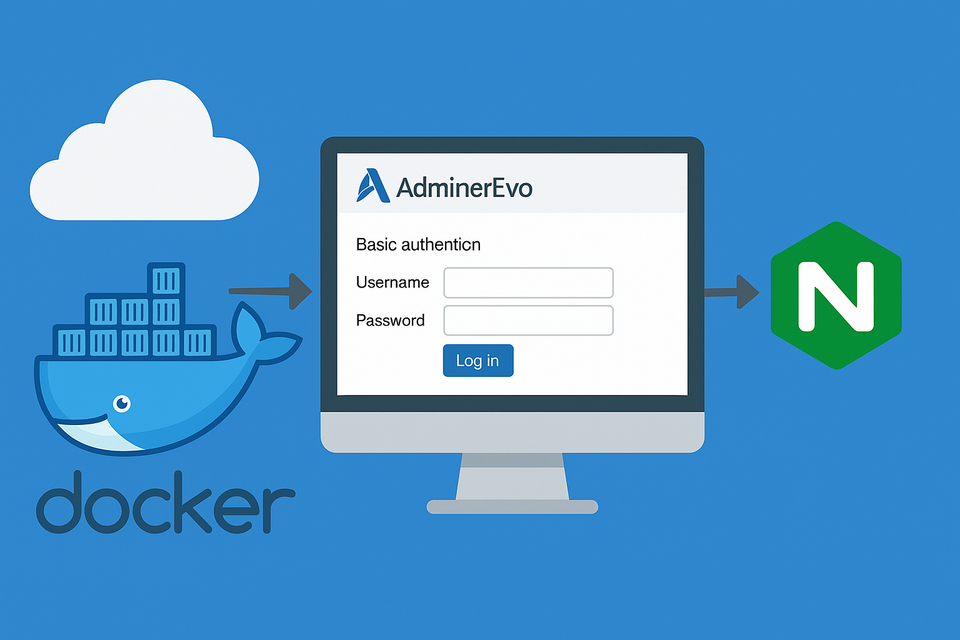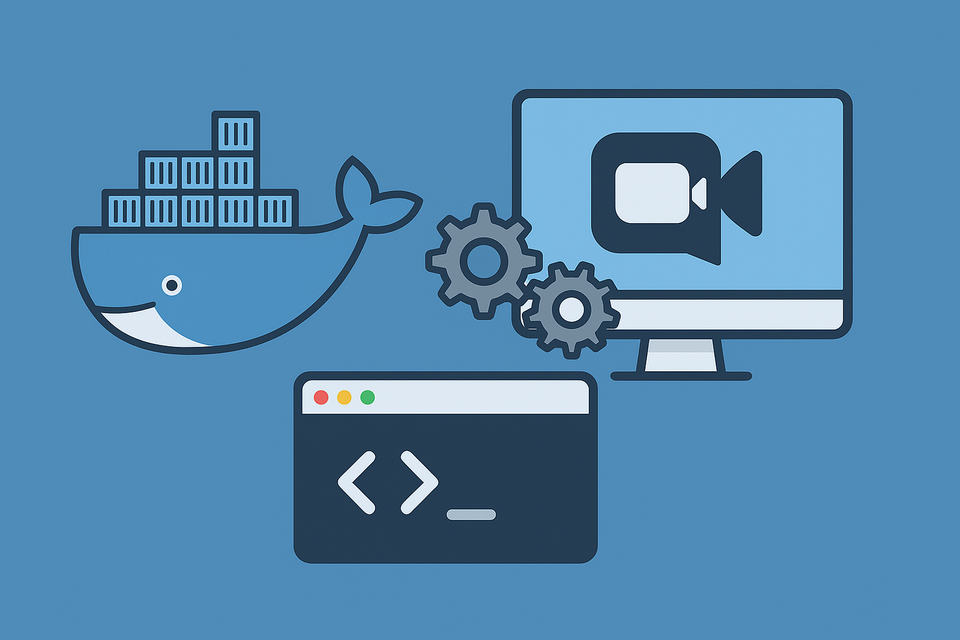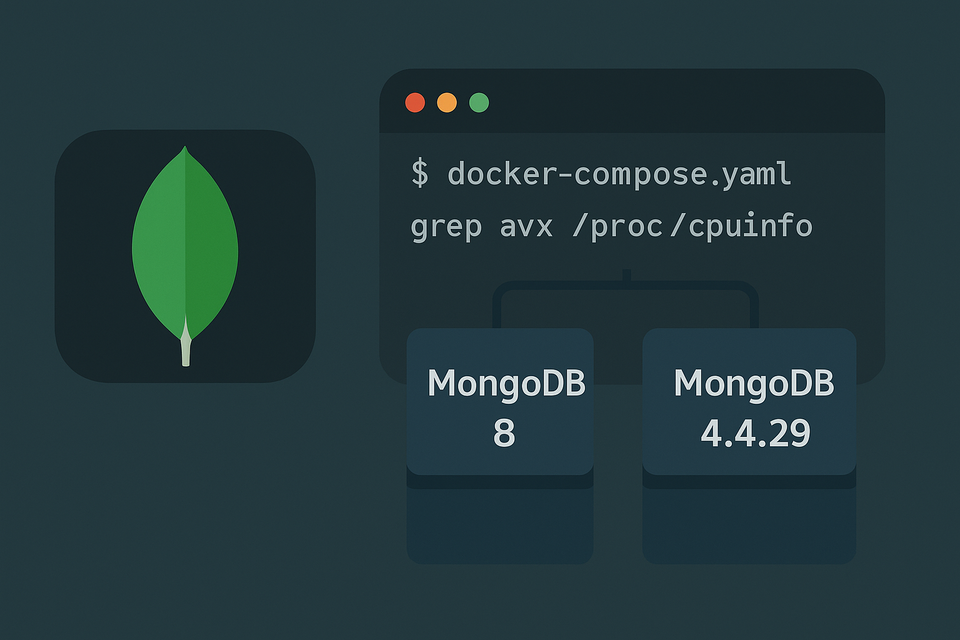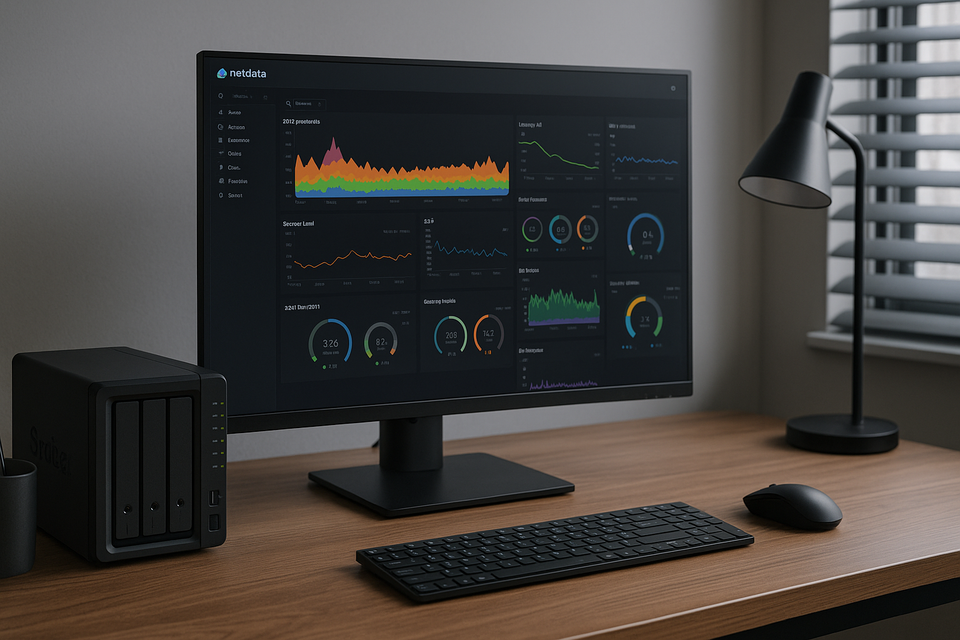Installing Vaultwarden via Docker: A Lighter LastPass Alternative (Password Server Guide)
Installing Vaultwarden via Docker is a privacy-friendly, lightweight LastPass alternative. In this guide you’ll get a full end-to-end setup (Docker, SMTP, reverse proxy, security) with comments, so you can host your own password server.
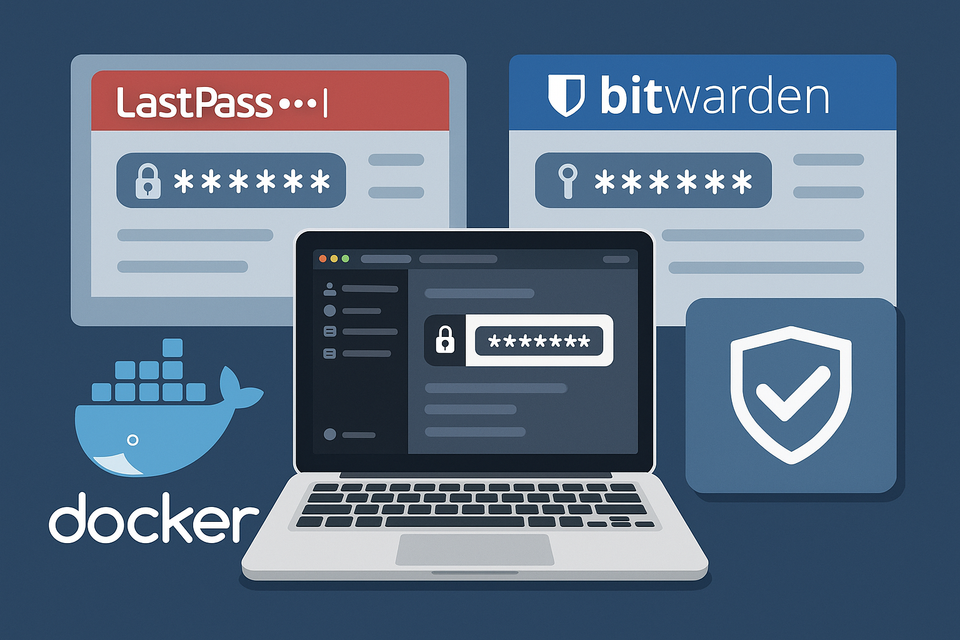
1. Why Use Vaultwarden as a LastPass Alternative?
LastPass is convenient, but your data lives in someone else’s cloud. For many, the core issue is data sovereignty and cost control.
Vaultwarden is a minimalist, unofficial server implementation that is protocol-compatible with Bitwarden clients (web apps, browser extensions, mobile/desktop apps). It’s written in Rust, so it tends to use lower memory and CPU than heavier server frameworks. Because you host it yourself (on your own VM, home server, or VPS), you control backups, access policies, and infrastructure costs.
The trade-off: more setup and maintenance effort. But for individuals or small teams who value control and privacy, the benefits often outweigh the costs.
Vaultwarden gives you essentially the same client ecosystem that official Bitwarden users enjoy. You just replace the backend with your own server.
2. Preliminaries: What You Need Before Diving In
Before configuring Docker and launching Vaultwarden, make sure you have the following in place:
| Component | Role / Why It Matters |
|---|---|
| Public domain name | e.g. vault.example.com, so clients can talk to your server over TLS |
| Reverse proxy + SSL/TLS | Use Nginx, Traefik, Caddy, etc. to handle HTTPS and forward to Vaultwarden |
| Docker & Docker Compose | Simplifies deployment and maintenance |
| Firewall / NAT / Port forwarding | Ensure HTTP/HTTPS ports are reachable from outside |
| SMTP for outgoing email | Needed for email verification, notifications, password resets |
| Timezone setting | For consistent logs, token expiration, etc. (we’ll use America/New_York) |
Once you confirm those are ready (DNS pointing to your server, SSL certs obtainable, ports 80/443 open, etc.), you can proceed.
3. High-Level Deployment Overview
This guide leads you step-by-step to:
- Create a
.envfile with domain, security settings, SMTP parameters - Generate an ADMIN_TOKEN (ideally as an Argon2 PHC hash)
- Write a
docker-compose.ymlthat references the.envvariables - Start the container (
docker-compose up -d) - Access the admin dashboard (
https://vault.example.com/admin) and create initial users - Hook your reverse proxy so that
vault.example.compath forwards to Vaultwarden - Connect clients (browser extension, mobile, desktop apps) to your server URL
The result is a self-hosted password server compatible with Bitwarden clients.
4. Writing the .env File (Domain, Security, SMTP, Performance)
Create a file named .env in your project directory, next to your docker-compose.yml. Here’s an annotated example (adjust to your domain, security, and SMTP settings):
# ── Required settings ─────────────────────────────────────
TZ=America/New_York
DOMAIN=https://vault.example.com # The public URL your clients will use
ADMIN_TOKEN='$argon2id$v=19$… (your hashed token)' # Use Argon2 hash, not plain text
SIGNUPS_ALLOWED=false # Disable public signup (recommended)
INVITATIONS_ALLOWED=true # Only admins can invite new users
# ── Recommended (security / performance) ───────────────
ROCKET_WORKERS=4 # Number of worker threads (tune to CPU cores)
LOG_LEVEL=info
WEBSOCKET_ENABLED=true
ICON_DOWNLOAD_TIMEOUT=10
RATE_LIMITS=10/1s,100/1m # Rate limits per IP (throttle abuse)
# ── SMTP (for email signups, password resets, alerts) ───
SMTP_HOST=smtp.gmail.com
SMTP_PORT=587
SMTP_SECURITY=starttls # “starttls” is broadly compatible
SMTP_USERNAME=your@gmail.com
SMTP_PASSWORD=your_app_password # Use a Gmail App Password, not your regular password
SMTP_FROM=your@gmail.com
Key points & best practices:
- By setting
SIGNUPS_ALLOWED=falseandINVITATIONS_ALLOWED=true, you disable open registration and allow only invites from admins. RATE_LIMITShelps fend off brute-force or denial-of-service attempts.- For Gmail, you must use an App Password (not your normal login password) if 2FA is enabled. Regular passwords will be rejected by Gmail’s SMTP policy.
- Be cautious with the
$characters in yourADMIN_TOKENhash — wrap the entire string in single quotes ('...$argon2id$...') so the shell or Docker Compose doesn’t interpret$as variable interpolation. - If you ever need debugging, you can temporarily set
LOG_LEVEL=debug.
5. Generating ADMIN_TOKEN Securely
It’s safer not to store your admin token as cleartext. Vaultwarden supports Argon2 PHC hashes. You can generate one using a temporary Docker container:
docker run --rm -it vaultwarden/server:latest /vaultwarden hash
You’ll be prompted to enter your admin password twice. The output looks like:
$argon2id$v=19$m=…$…$… (full hash)
Copy the entire hash (including the $argon2id$… prefix) and paste it into your .env as ADMIN_TOKEN='that_full_hash'.
If your container is already running and named vaultwarden, you can also do:
docker exec -it vaultwarden /vaultwarden hash --preset owasp
That also produces a hash.
Always wrap the hash in single quotes if you later export it as an environment variable on a shell, to prevent $ evaluation issues.
6. Gmail SMTP Setup (Using App Passwords)
Vaultwarden uses SMTP for email confirmations, notifications, etc. While running your own mail server is possible, using Gmail’s SMTP is often easier (if permissible under Gmail’s policies). But Gmail enforces restrictions:
- You cannot use your regular Gmail account password for SMTP under 2FA.
- You must generate an App Password (16-character password) in your Google account settings.
- Enable 2-Step Verification on the account first, then generate an App Password for “Mail” (or “Other”) and use that.
- Use
SMTP_HOST=smtp.gmail.com,SMTP_PORT=587,SMTP_SECURITY=starttls. These are widely known working settings.
If email sending fails, double-check username, password, firewall rules, and whether port 587 is open. Gmail logs (in your account security center) might show rejected login attempts.
7. Crafting docker-compose.yml and Launching
In the same directory with .env, create a docker-compose.yml like this:
networks:
edge:
external: true # Use an existing reverse-proxy network
services:
vaultwarden:
image: vaultwarden/server:latest
container_name: vaultwarden
restart: unless-stopped
env_file: ./.env
environment:
- DOMAIN=${DOMAIN}
- ADMIN_TOKEN=${ADMIN_TOKEN}
- SIGNUPS_ALLOWED=${SIGNUPS_ALLOWED}
- INVITATIONS_ALLOWED=${INVITATIONS_ALLOWED}
- WEBSOCKET_ENABLED=${WEBSOCKET_ENABLED}
- ICON_DOWNLOAD_TIMEOUT=${ICON_DOWNLOAD_TIMEOUT}
- RATE_LIMITS=${RATE_LIMITS}
- ROCKET_WORKERS=${ROCKET_WORKERS}
- LOG_LEVEL=${LOG_LEVEL}
- TZ=${TZ}
# SMTP
- SMTP_HOST=${SMTP_HOST}
- SMTP_PORT=${SMTP_PORT}
- SMTP_SECURITY=${SMTP_SECURITY}
- SMTP_USERNAME=${SMTP_USERNAME}
- SMTP_PASSWORD=${SMTP_PASSWORD}
- SMTP_FROM=${SMTP_FROM}
volumes:
- ./data:/data
networks:
- edge
healthcheck:
test: ["CMD-SHELL", "wget -qO- http://127.0.0.1/alive || exit 1"]
interval: 30s
timeout: 5s
retries: 5
Before launching, ensure there is a data directory:
mkdir -p data
Then start:
docker-compose up -d
Docker will pull the vaultwarden/server:latest image if not present, then start the container in detached mode.
8. Initial Setup via Admin Dashboard and Reverse Proxy Configuration
Once the container is running:
- Ensure your reverse proxy (Caddy, Nginx, Traefik, etc.) is configured to route
vault.example.comsecurely (HTTPS) to your Vaultwarden container. - Visit
https://vault.example.com/admin. You’ll be prompted to authenticate using the plaintext admin password that you hashed earlier. - Once logged in, go to the Users tab and create the first user accounts.
- Since
SIGNUPS_ALLOWED=false, regular users cannot self-register. Admins invite users manually (or via invitation email). - If you see email sending errors, diagnose SMTP or network issues.
Check logs:
docker logs vaultwarden
Verify that no errors about "Invalid admin token" appear, and that SMTP connections are successful.
9. Using the Client Ecosystem (Browser, Mobile, Desktop)
Because Vaultwarden is protocol-compatible with Bitwarden, your clients don’t need custom builds. Use official Bitwarden apps/extensions, but point them at your domain:
- Browser extension: in settings, change the server URL from
https://vault.example.com - Mobile/desktop apps: enter the server URL when configuring the connection
You’ll get the same secure UX (vault of encrypted secrets, auto-fill, password generator, etc.) as with Bitwarden’s cloud offering.
10. Comparison Table: LastPass vs Official Bitwarden vs Self-Hosted
| Feature | LastPass | Bitwarden (Cloud) | Bitwarden (Self-Hosted) | Vaultwarden (Self-Hosted) |
|---|---|---|---|---|
| Hosting | Vendor cloud | Vendor cloud | Your own server | Your own server (lighter) |
| License / Openness | Proprietary | Open-source server + clients | Open-source | Open-source (community) |
| Data sovereignty | Low | Low | High | High |
| Client ecosystem | Broad | Very broad | Same | Same clients (Bitwarden) |
| Operating cost | Subscription | Subscription | Infrastructure cost | Very low (light resource usage) |
| Resource demands | Moderate | Moderate | Moderate | Low (Rust implementation) |
| Management UI | Provided | Provided | Provided | Provided (via token) |
| Email / notifications | Built-in | Built-in | SMTP required | SMTP required (e.g. Gmail) |
| Updates | Auto | Auto | Manual | Manual |
| Team / business features | Strong | Strong | Strong | Moderate to Strong (sufficient for teams) |
Vaultwarden gives you most of the advantages of self-hosted Bitwarden but with reduced overhead and easier resource footprint.
11. Operations Tips: Backups, Logs, Monitoring
- Backups: Periodically snapshot your
./data/directory and store offsite (e.g. another machine, cloud storage). - Health checks: The
healthcheckblock indocker-compose.ymluses the/aliveendpoint to mark container health. - Logging: Start with
LOG_LEVEL=info. If trouble arises, temporarily raise todebug. - Scaling: Adjust
ROCKET_WORKERSto match your server’s CPU cores. - Monitoring: Use basic container monitoring (e.g.
docker statsor Prometheus + cAdvisor) to observe memory/CPU usage. - Updates: To upgrade, stop container, pull new image, then
docker-compose up -dagain. Always backup before upgrades.
Troubleshooting shortcuts:
- Admin login fails (“Invalid admin token”) — Confirm you pasted the full Argon2 hash (including
$argon2id$…) and wrapped in single quotes so that Docker Compose sees it literally (not expanded by shell). - SMTP send failures — Check to ensure port 587 is open, Gmail App Password is valid,
SMTP_SECURITYcorrect, and no firewall or network restrictions. - Healthcheck failed / container unhealthy — Check container logs and whether
http://127.0.0.1/aliveinside the container returns a success response.
12. FAQ (Frequently Asked Questions)
Q1. Is Vaultwarden fully identical to Bitwarden?
Not 100%, but it implements the Bitwarden protocol, so most clients are compatible. Some features or edge-case behaviors may differ, but for most personal or small-team use, it suffices.
Q2. What’s the most important security measure when deploying Vaultwarden via Docker?
The combination of a hashed ADMIN_TOKEN (not plaintext), enforced HTTPS, rate limiting, and disabling public signups (i.e. SIGNUPS_ALLOWED=false) provides a strong foundation.
Q3. Why can’t Gmail accept my regular account password for SMTP?
Because Google enforces that third-party SMTP access must use App Passwords under accounts with 2FA. Regular password access is blocked.
Q4. Can I reuse an App Password across services?
Yes, technically, but from a security hygiene perspective, it’s better to issue a separate App Password per service. App Passwords are non-recoverable—if lost, you must revoke/regenerate.
Q5. How do I install the browser extension?
Install the Bitwarden extension from your browser’s store (Chrome Web Store, Firefox Add-ons, etc.). In its settings, change the server URL to https://vault.example.com (your domain) instead of the default Bitwarden cloud.
Q6. Which should I choose: Bitwarden (official cloud) or Vaultwarden (self-hosted)?
If you prefer zero maintenance and official support, Bitwarden Cloud is a solid choice. If you prioritize control, privacy, and low recurring costs, Vaultwarden is compelling—especially for personal or small-team use.
13. Next Steps & Extensions
Once your vault server is up and running, here are some ideas to take it further:
- Organizational / team policies: shared vaults, group policies, roles
- Enforcing MFA / 2FA on user accounts
- Integrating with enterprise SSO or LDAP (if needed)
- Using passkeys or WebAuthn via extensions (if supported)
- Automating certificate renewal (Let’s Encrypt via your reverse proxy)
- Periodic audits: check logs, failed login attempts, unusual traffic

